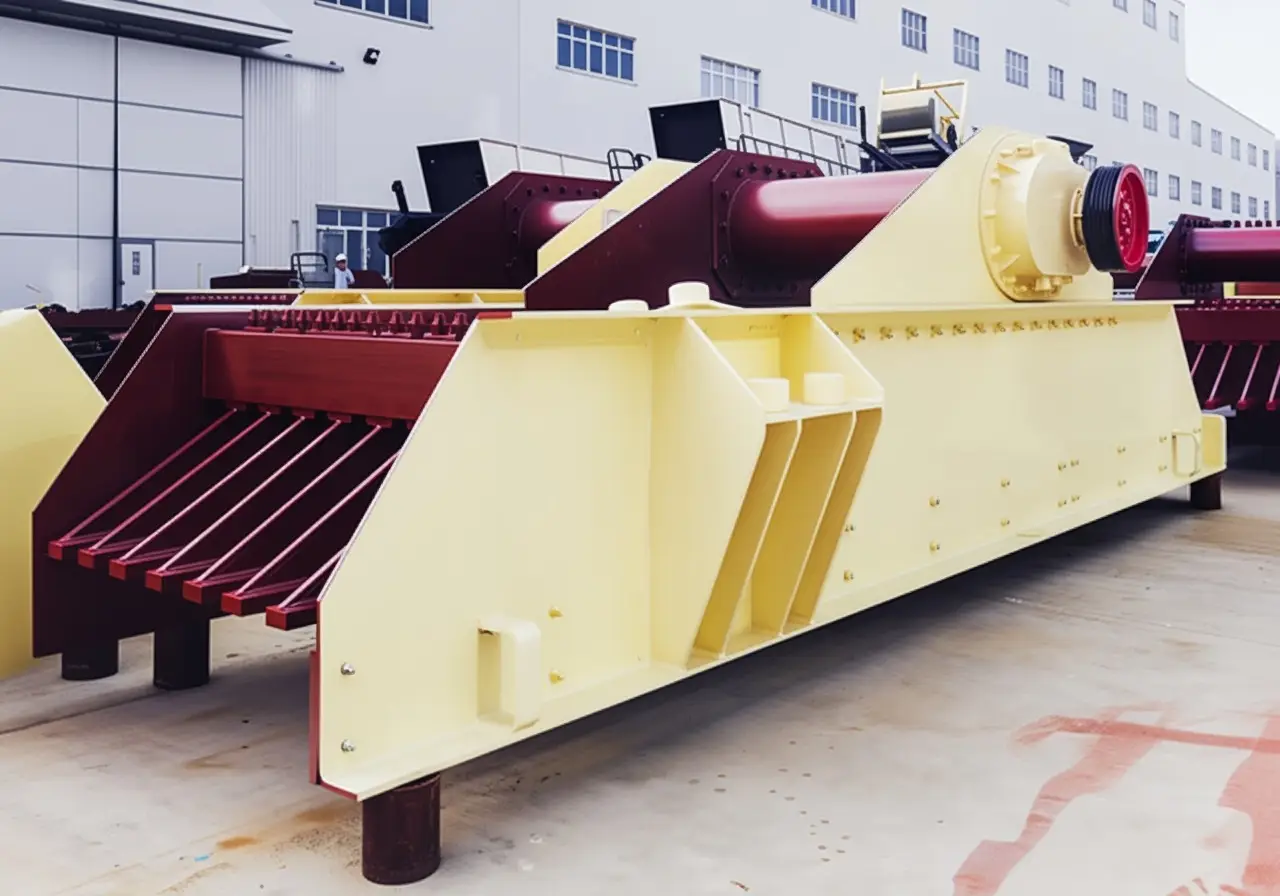Service
Vibrating Feeder
Efficient Feeding Solution for Industrial Applications
A vibrating feeder, also known as a vibratory feeder or vibration feeder, is essential equipment designed to feed block or granular materials uniformly and promptly from storage tanks into various machines such as belt conveyors, bucket elevators, crushers, and more. This equipment plays a key role in automatic proportioning, portion packaging, and integrated control systems, making it indispensable for achieving automation in production processes.

Vibrating Feeder
Widely used across multiple industries, vibrating feeders support crushing and screening operations in metallurgy, coal mining, mineral processing, building materials, chemical manufacturing, abrasives, and other sectors. Their versatility makes them a popular choice wherever continuous and controlled material feeding is required.
In cement manufacturing plants specifically, vibrating feeders function as critical feeding devices. They transfer raw materials from feed bins to cement crushers to ensure smooth and consistent crushing operations. A typical stone crushing production line incorporates several types of equipment, including the vibrating feeder for feeding, various crushers such as jaw crushers, impact crushers, cone crushers, and hammer crushers for processing, screening equipment like linear or circular vibrating screens for sorting, and conveying devices like belt conveyors for material transport.
Working Principle of Vibratory Feeder
The structure of a vibratory feeder includes a feeding tank, vibration exciter, spring supports, transmission actuators, and other components. The core of the vibration is generated by the vibration exciter, which consists of an eccentric shaft paired with a gear set. A motor powers the system by driving the shaft through a triangular belt. This action causes the main and passive shafts to rotate in opposite directions simultaneously, producing vibration in the feeding tank.
This vibration causes material to move forward continuously and evenly, enabling efficient and controlled feeding of materials into downstream equipment. This reliable conveying mechanism helps maintain steady production rates and enhances overall operational efficiency.
In summary, vibrating feeders serve as vital equipment for uniform material feeding in a wide range of industrial applications. Their ability to control the flow of bulk materials contributes significantly to automation, improved processing efficiency, and consistent output quality in industries such as cement manufacturing, mining, and materials processing.
